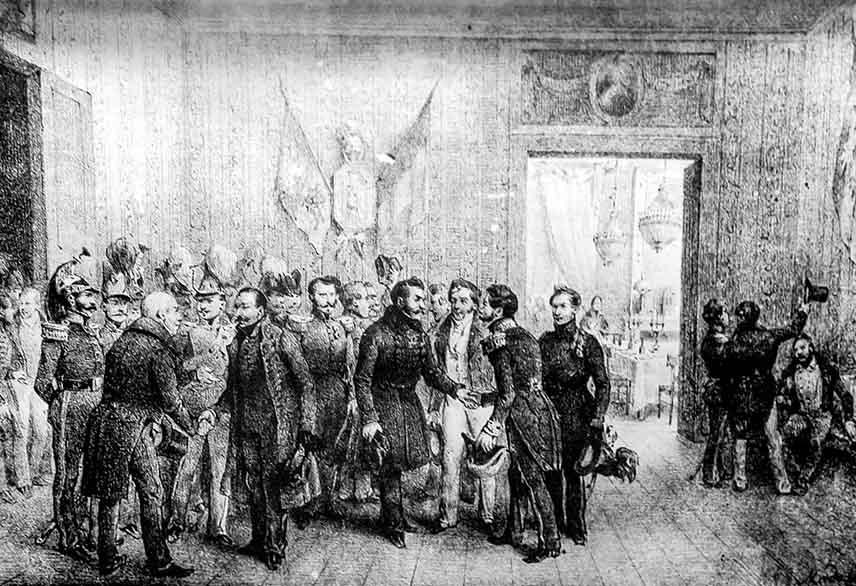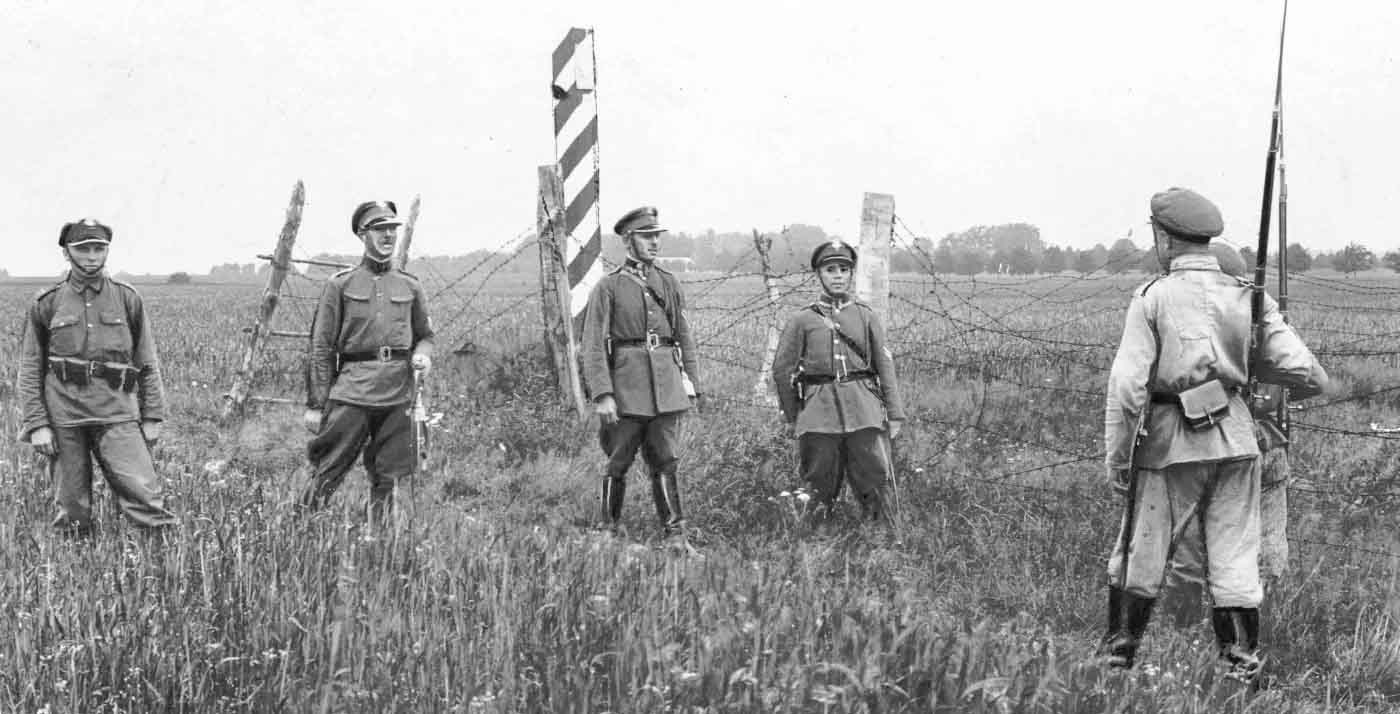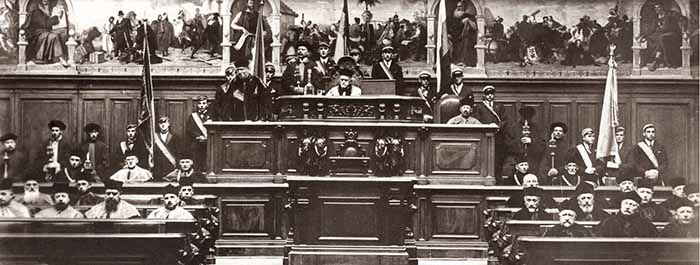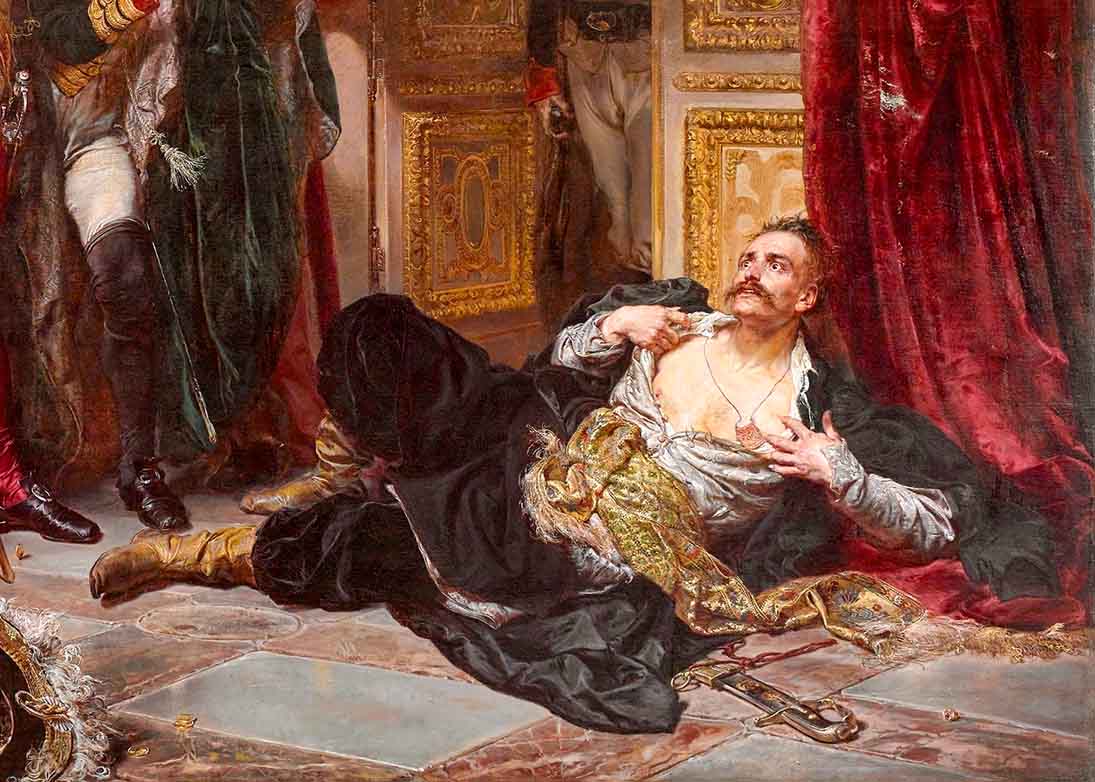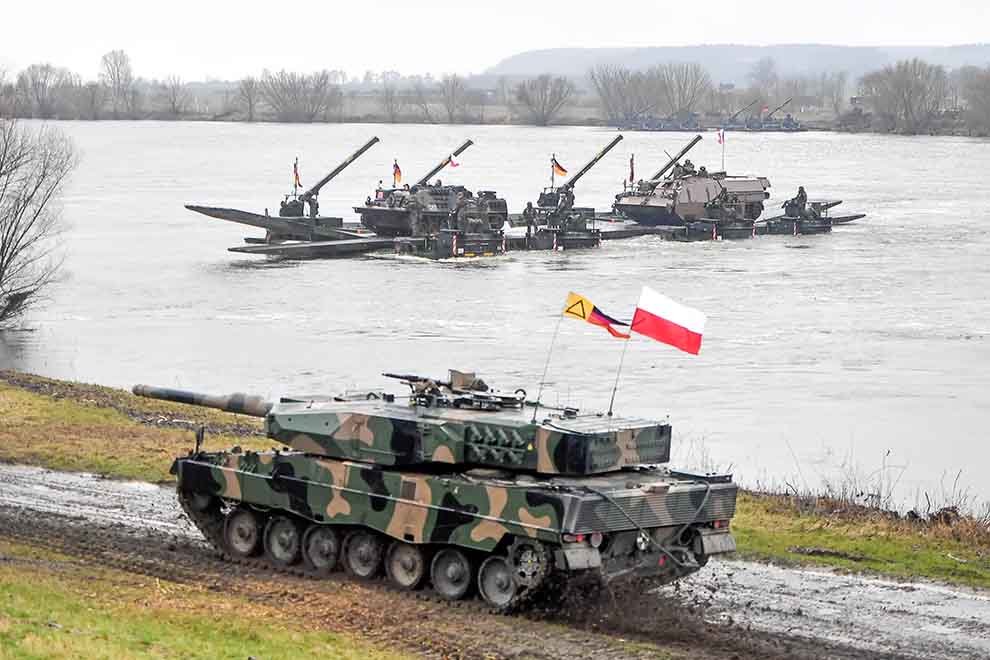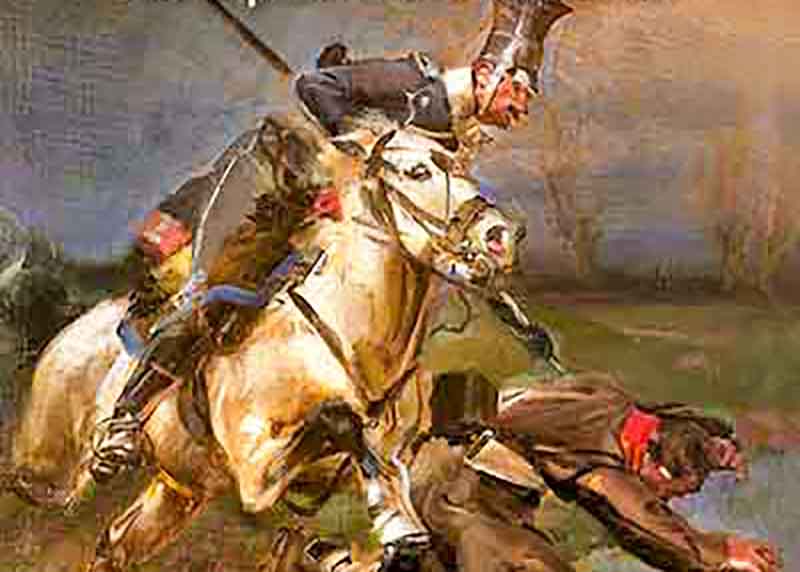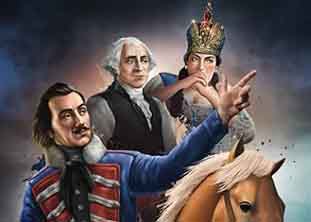We now move to the 20th century and examine the efforts of Roman Dmowski and Marshall Jozef Pilsudski as they attempt to establish an independent Poland while maintaining pragmatic relations with Russia.
Dmowski believed Russia would accept the rebuilding of a strong Poland on its western edge as a bulwark against Germany. By contrast, Dmowski’s rival Pilsudski believed accommodation could only be achieved after the Empire of the Tsars had been broken up permanently, which was his goal. Although pursuing different paths, the two leaders jointly brought about Poland’s independence following World War I, which is when the Russian Empire collapsed. However, a new empire was being established by Lenin, which was to become the Soviet Empire.
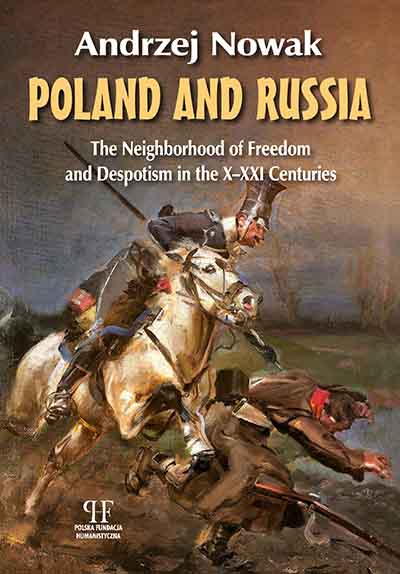
"Poland and Russia" book cover (Source: Kuryer Polski)
Chapter 7 covers the period 1918 to1939, which begins with Poland regaining its sovereignty at the end of World War I. However, in November of the same year, Leon Trotsky announced the sovietization of Poland, Ukraine, and Finland, calling them the links between Soviet Russia and a future Soviet Germany. The Bolsheviks were intent on reaching the proletariat of Germany and Poland was seen merely as transit territory. Armed with German economic and military might, the Bolshevik’s revolutionary struggle against the capitalist world would intensify further and the two would then prevail over France and England.
The Red Army attacked Poland in July 1920, led by General Mikhail Tukhachevsky, who urged his “soldiers of the workers’ revolution” to “tread over the white corpse of Poland” and “march on to Vilnius, Minsk, and Warsaw”. Under General Pilsudski, however, Warsaw did not fall. The Polish victory at the Battle of Warsaw was decidedly significant for Europe. It saved Poland’s independence for the next 20 years and allowed the country to flourish as well as produce a generation of leaders including Pope John Paul II Karol Wojtyla. Nowak maintains that this victory also allowed other countries to survive Moscow’s imperialism for another 20 years, which included Czechoslovakia, Romania, Lithuania, Latvia, Estonia, Finland, and perhaps even Austria.
We now see Stalin rebuild his military forces and prepare the Soviet people for war through robust industrialization and a top-down social revolution that is far bloodier than the 1917 Bolshevik Revolution. His new state ideology follows the traditions of the Russian Empire and treats non-Russian peoples as a fifth column that must be summarily eradicated. As a result, no other nationality in the USSR was affected by Stalinist terror to the same extent as the Poles. The "Polish Operation", carried out as part of Stalin’s Great Purge between 1937 and 1938, was implemented under Order No. 00485, which directed the genocide of Poles living in the USSR. As Nowak stresses, “There had never been a single document published before that entailed the deliberate liquidation of such a large number of people based purely on ethnicity. More than 150,000 were shot, died in deportations, or were starved to death.”
Poles now realized that their hope of a non-imperial Russia would not materialize. Nowak reminds us that “if we want to preserve this hope for the future, we must remember. We are indeed obliged to remember this history, as it actually was and not a version of it. We cannot allow ourselves to be told that for the sake of historical or contemporary ‘non-aggression pacts’ or the facilitation of economic collaboration, that we should simply forget about it.”
Chapter 8 examines the World War II years of 1939 to 1945 as Stalin conquered Poland together with Hitler. Stalin’s attitude toward the Poles followed the tradition of the Tsars, in which all potential opponents must be eliminated. In Stalin’s case, however, this was done with far greater brutality and on a much larger scale. In addition, his geopolitical philosophy saw Poland as a barrier to expanding westwards that prevented him from dominating all of Eastern and Central Europe. Nowak offers that the 1920 war was another factor in Stalin’s attitude toward Poland. Beaten by the Poles at Lviv, he was also blamed for the Polish defeat of the Bolsheviks because he delayed in carrying out Lenin’s order to reinforce Tukhachevsky at Warsaw. This hurt him deeply and, unsurprisingly, those who denounced him for the campaign’s failure did not survive the Great Purge.
Stalin further kept with Russian imperialist tradition by cooperating with Germany in the destruction of the Polish “barrier”. Their nonaggression pact signed by Ribbentrop and Molotov contained a secret protocol placing Eastern Europe in Stalin’s sphere of influence. Nowak explains that if Stalin had not received Ribbentrop in Moscow to sign the pact, Hitler would have had to withdraw from initiating war because he was unsure whether Stalin would ally himself with the Western states. Without Stalin’s approval, the war would not have begun on 1 September 1939, which made Poland the first victim and the first country to fight the German Third Reich.
On 17 September 1939, Stalin’s Red Army invaded Poland without a declaration of war. Once under military occupation, Stalin used the same methods of assimilation that the Tsarist Empire practiced for centuries. First, citizens were murderously terrorized and second, the territory was annexed with immediate elections and only one name on the ballot. This was followed by deportations in cattle cars of some hundreds of thousands of Poles to the deep Soviet interior where many thousands died enroute and at their destinations. At Katyn, Stalin icily liquidated the Polish intelligentsia; the NKVD’s Lavrenty Beria sentenced to death 25,700 Polish citizens and had the prisoners killed with a shot to the back of the head.
At the Yalta Conference in February 1945, Stalin, Roosevelt, and Churchill met to discuss the postwar reorganization of Germany and Europe. We witness the ailing Roosevelt’s attitude toward Poland through his remark that the Polish question “has already given the world a headache for five centuries”. Roosevelt did not recognize that there was more at stake than just Poland’s independence; it was also the independence of half of Europe.
Thus, not only was the war against Germany over, it was an unmistakable victory for Stalin’s Empire. As Nowak points out, Poland had been conquered; it was deprived of half of its territory and forcibly moved. “It was now to be subjected to further ‘processing’ by combining the ideology of Marx and Lenin with the legacies of Ivan III, Ivan IV, and Catherine II.”
Chapter 9 reviews the years 1945 to 1989 when Poland was under 45 years of ruthless Communist rule directed from the Kremlin. Nowak cites a Polish journalist’s ominously accurate explanation of the Soviet subjugation process to transform a conquered nation: “This method could be compared to a surgical operation to take out the patient’s brain and the national heart.”
Former soldiers of the Home Army, called the “Unbroken Soldiers”, continued their armed struggle for independence against the new Soviet occupying forces. A domestic terror apparatus led by the Ministry of Public Security was established by the Communists to suppress the Polish independence underground. Witnesses to the Katyn massacre were eliminated while Soviet propaganda portrayed it as a German crime.
With Stalin’s death in 1953, the Communist state now duels openly with the Catholic Church in an effort to destroy the Polish national and cultural traditions that Moscow had tried to abolish for centuries. Despite the efforts to defeat Poland’s Catholic Church, including the internment of Cardinal Wyszynski for three years, the Church remained unbroken.
The Polish hope for freedom continued as evidenced by the Polish workers’ protests in Poznan in June 1956. Despite the state authorities’ ensuing policy of repression, this only strengthened Polish resistance. The struggle continued in March 1968 with major student, intellectual, and other activist protests against the Communist regime. Gomulka used the dissident protests to initiate an anti-Semitic campaign to purge Polish Jewish rivals in the Communist party as well as left-leaning Polish Jews who were professionals, party officials, and secret police functionaries. The next stage was the workers’ protests on the Baltic Coast in December 1970. Then in 1976, workers protested in Radom and Ursus against an attempt to introduce drastic increases in food prices.
Because of Cardinal Karol Wojtyla’s election as pope in 1978 and his pilgrimage to Poland in 1979, public sentiment for freedom and independence gained wide-ranging momentum. In August 1980, this enthusiasm emerged as the beginning of the Solidarity (Solidarnosc) movement, which the Pope now did everything he could to ensure its survival. Consequently, on the Kremlin’s order, an assassin’s bullet struck John Paul II on 13 May 1981.
Seven months later, General Jaruzelski imposed martial law in an attempt to quash Solidarity. By 1988, the strikes at the Gdansk Shipyard and Lenin Steel works confirmed that Solidarity was a sweeping social revolution and the Round Table Talks in Warsaw, held between February and April in 1989, together with the partially free elections on 4 June 1989, validated Solidarity’s success. However, the struggle to regain independence was not over. As Nowak points out, the question now was whether Gorbachev and Jaruzelski could manage to retain control over their Polish experiment.
Chapter 10 surveys the years 1989 to 2002 as Poland sees a limping Soviet Empire undergo significant transformation. With the failed coup attempt in August 1991 by Soviet Communist Party hardliners, power was now being transferred to the KGB. By late 1991, there was no longer an empire; Ukraine leader Leonid Krawchuk and Belarus leader Stanislav Sushkevich met with Boris Yeltsin in December 1991 to create the Commonwealth of States in place of the USSR.
Visits by Polish leadership to Moscow showed a change in Polish-Soviet relations as Jaruzelski received from Gorbachev some of the documents involving the previously-denied Katyn Massacre. The change in Polish-Soviet relations was more evident with the initiatives of Lech Walesa. After meeting with Yeltsin and Gorbachev, he met with the Russian Ambassador to Poland, Vladimir Brovikov and, with the media in attendance, he not only demanded the place of burial of the Polish officers murdered at Katyn but also ordered the removal of Soviet troops from Poland.
Nevertheless, Walesa acted pragmatically to pressure from the West, which wanted Poland to get along with Russia and not with Ukraine. The State Department and many Western European politicians insisted that Moscow had to be the guarantor of stability for Eastern Europe. Walesa accepted this game and in August 1993, met with Yeltsin in Warsaw to obtain his consent for Poland to enter NATO. It is said that Yeltsin’s agreement likely resulted from having a bit much to drink. In November 2004, the Orange Revolution broke out in Ukraine and in 2005, the Law and Justice party came to power in Poland. The Polish doves had flown and Russia would now face a hawkish geopolitical stance.
Meanwhile, having earned a PhD in gas sciences, Putin’s strategy was to make Europe dependent on Russia by implementing Nord Stream I and II. A South Stream was also planned to run across the Black Sea toward southern Europe but was cancelled in 2014. It seemed that Poland’s gas dependence on Russia could be prevented with a proposed pipeline connecting Poland via Ukraine with Georgia and Azerbaijan. However, Donald Tusk was installed as Poland’s new Prime Minister and the effort to end the dependence on Russian gas was disallowed.
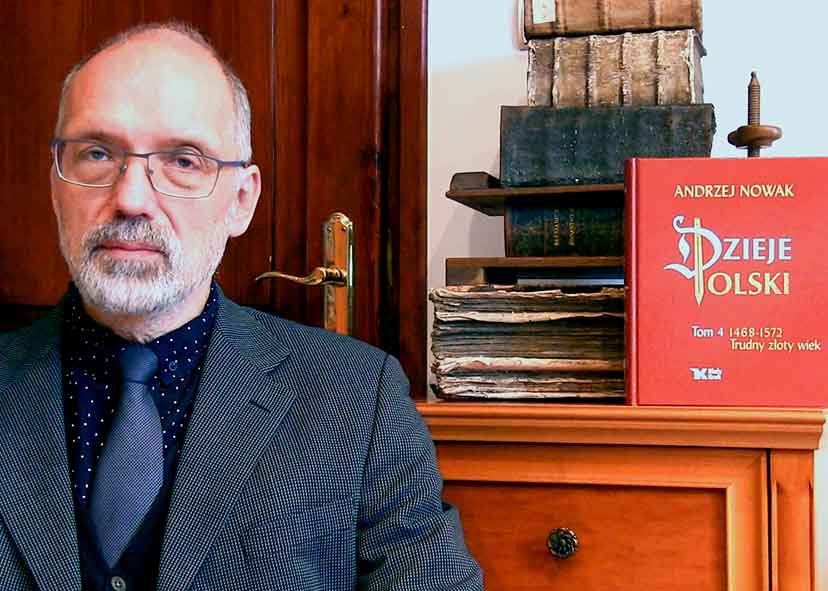
Professor Andrzej Nowak (Source: Wikipedia)
In his concluding remarks, Nowak asks us to look at today’s Russia so that we can understand how Putin’s diktats comprise “a kind of synthesis of the imperial-political heritage of Ivan I, III, and IV, Peter I, Catherine II, as well as Lenin and Stalin.” He further asks the all-important question for Poles: “Where can we draw hope from and break this apparent fatalism in Polish-Russian relations that is driven by Kremlin ideology?” He then answers this question succinctly: “History must not be forgotten. We only have a chance of coming to an understanding with Russia and Russians based on the rejection of this totalitarian legacy. These are not problems that will pass on their own; they are problems that will force the Russians, the hand of the Russian elite, and others to change their policy either within Russia or towards Russia. The most important thing for us Poles in this situation is not to lose sight of the truth about our history, who killed whom and in the name of what ideals and interests, who built a civil society, and who supported despotism.”








